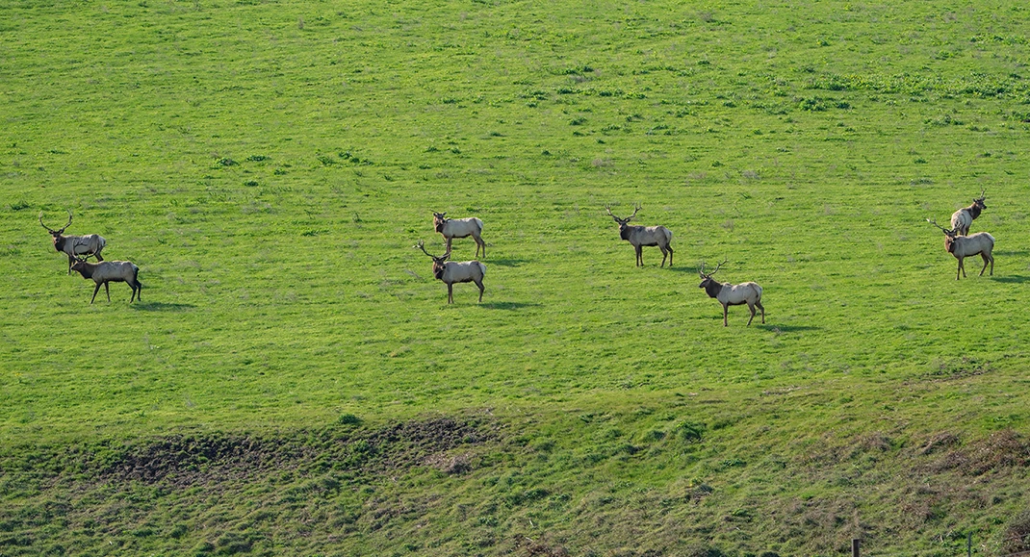On September 28th, 2021, two individuals were elk hunting off a forest service road in the Invermere area of British Columbia spotted a herd of elk and began to observe them to ensure that a legal elk holding six or more antler tines was present in the group. The elk herd at this time were on private land belonging to an individual who lived in the area. One of the two hunters fired two shots from a rifle that was heard by the landowner. The landowner travelled to the two hunters and began to ask them questions. According to the landowner the men stated they were simply looking for elk to hunt. The men initially denied shooting the rifle but did eventually state that he did in fact fire two shots over the herd to move them. The landowner took photos of the hunters and their vehicle and contacted a conservation officer, who as part of their investigation seized the hunting parties’ rifles and licences. The landowner could see an injured elk in the herd, and it was subsequently put down by the attending officer. One of the accused in this matter was charged with:
- Hunting an elk with less than six points on its antlers, contrary to s. 26(1)(c)
- Hunting over or on cultivated land, contrary to s. 39(1)(a)
- Having hunted and injured an elk failed to kill it and include it in his bag limit, contrary to s. 35(2)(a)
This seems like a solid case to investigate. The hunters admitted to firing at the elk, which were on private land. Conservation officers that attended the scene seized not only the rifles but were able to recover a bullet from the carcass of the animal, as well as shell casings from where they were fired with the help of a K9 unit. Based on the definition of “Hunt” in the Wildlife Act for British Columbia anyone who is “shooting at, attracting, searching for, chasing, pursuing, following after or on the trail of, stalking, or lying in wait for wildlife or attempting to do any of those things, whether or not the wildlife is then or subsequently wounded, killed or captured: (a) with intention to capture the wildlife, or (b) while in possession of a firearm or other weapon” is considered to be hunting.
The definition of hunting is quite broad, but necessary to capture the different aspects of hunting. In the events of this investigation, it could very easily be determined that these men where in fact hunting. The men had met multiple parts of this definition as they were ultimately searching for as well as shooting at the elk. The judge determined the men to be in fact hunting at the time of the offence. Ballistic analysis had failed to prove the bullet recovered had been in fact fired from the rifle seized by the officers from the hunters. This ultimately eliminates the charge under s. 35(2)(a) (i.e., injuring an elk) as the officers could not prove the men killed the elk, as well as the s. 26(1)(c) charge (i.e., hunting a bull elk with less than 6 points), which I feel could still be debated, but at another time.
Next is the question of “cultivated” land. Without a definition in the regulations of what constitutes cultivated land has always been subject to interpretation. I think the judge in this case was reasonable and articulate in his findings and that this case will help prosecute others in the future. The judge had used the Oxford English Dictionary definition which includes “the care, cultivation, and breeding of crops and animals”. This, along with testimony from the landowner stating he had cattle on the 2700 acres of private land was enough to satisfy the judge that this land is considered “cultivated” and that cultivation, although not defined in the BC Wildlife Act, includes not only crops, but animals as well. The judge’s decision on the definition of cultivated land can now be applied not only private but also crown land that is subject to a grazing or agriculture lease. So, hunters need to be fully aware that cultivated land means more than simply seeing a crop or tilled soil.
Section 39 of the Act states, “Hunting over cultivated land.” As most legislation this is written to avoid any loopholes that can be found and, in this case, it works perfectly. By stating “over” and not on, this eliminates the act of shooting from a legal area (i.e., crown land) at wildlife on cultivated land and then obtaining permission from the landowner or lease holder to retrieve the animal. If the legislation had simply stated “hunting on” cultivated land, it could be easily circumvented by shooting wildlife while not standing on the cultivated land. The judge in this case was very articulate and reasonable in his definitions. The outcome of this investigation, although likely not what the officers wanted to see happen, was great for any future wildlife matters that come before the court.
Case law is needed in any investigation to define “gray areas” subject to interpretation. For BC to now have two major definitions figured out by case law that can be used in the future to help prosecute poachers is a big win for the conservation officers who are out there day after day protecting the wildlife for everyone else to enjoy.
Photo credit: Darryn Epp
